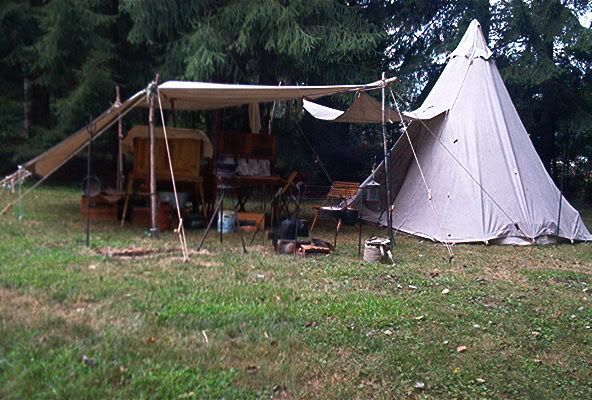Well, I'm going to say some stuff you probably don't want to hear but maybe worth it to think about for future use. On the lean to...there are some paintings of the time showing a blanket set up as a lean to and sail cloth was reported. Canvas was available in the later era so..lean to probably pc but I've never run across any actual reference. The Diamond, actually for one guy I don't think it is too bad if you are expecting rain, you sacrifice space for better protection from sideways driven rain. If you are in the woods with brush as wind protection, the plain old lean to is actually pretty good in a rain.
One tent on my "To Do" list is a mini-tepee. William Drummond Stewart speaks about a scrap of an old tepee used for a "mini" about 8' tall and maybe 6-7 poles. There's another references but I forget which (1843 "ish") might have been Sage- with the same thing mentioned. Then there is Marcy who wrote post 1840 but was in the west pre-1840 and dealt with a lot of the old mountain men, and in Marcy's book there is an illustration of the same type of mini-tepee and he says it was a "mountain man favorite". There's an Old Kirk Douglas movie where he plays a mountain man, actually pretty good- cordeling a flat boat up the Missouri, etc and he is in a mini-tepee as well. I have been playing with designs and a 12 x 15 tarp ought to be able to be cut into a half circle and used for one of these shelters. If I do it, I might use 2x2's for the poles and round them off and make some sort of ferrule so they can be broken down and put in a vehicle.





